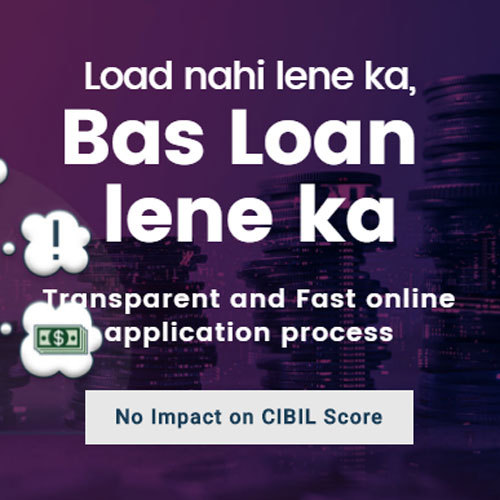The process of electronically filing income tax returns is known as e-filing. You can either seek professional help or file your returns yourself from the comfort of your home by registering on the income tax department website or other websites. The due date for filing tax returns (physical or online), is July 31st
Who should e-file income tax returns?
Online filing of tax returns is easy and can be done by most assessees.
- Assessee with a total income of Rs. 5 Lakhs and above.
- Individual/HUF resident with assets located outside India.
- An assessee required to furnish a report of audit specified under sections 10(23C) (IV), 10(23C) (v), 10(23C) (VI), 10(23C) (via), 10A, 12A (1) (b), 44AB, 80IA, 80IB, 80IC, 80ID, 80JJAA, 80LA, 92E or 115JB of the Act.
- Assessee required to give a notice under Section 11(2) (a) to the assessing officer.
- A firm (which does not come under the provisions of section 44AB), AOP, BOI, Artificial Juridical Person, Cooperative Society and Local Authority (ITR 5).
- An assessee required to furnish returns U/S 139 (4B) (ITR 7).
- A resident who has signing authority in any account located outside India.
- A person who claims relief under sections 90 or 90A or deductions under section 91.
- All companies.
Types of e-Filing:
- Use Digital Signature Certificate (DSC) to e-file. It is mandatory to file IT forms using Digital Signature Certificate (DSC) by a chartered accountant.
- If you e-file without DSC, ITR V form is generated, which should then be printed, signed and submitted to CPC, Bangalore by ordinary post or speed post within 120 days from the date of e-filing.
- You can file e-file IT returns through an E-return Intermediary (ERI) with or without DSC.
- How to choose the right form to file your taxes electronically
- It can be confusing deciding which form to submit when filing your tax returns online. The different categories of Income Tax Return (ITR) forms and who they are meant for are tabulated below.
ITR 1 (SAHAJ) Individuals with income from salary and interest ITR 2 Individuals and Hindu Undivided Families (HUF) not having income from business or profession ITR 3 Individuals/HUFs being partners in firms and not carrying out business or profession under any proprietorship ITR 4 Individuals and HUFs having income from a proprietary business or profession ITR 4S (SUGAM) Individuals/HUF having income from presumptive business ITR 5 Firms, AOPs,BOIs and LLP ITR 6 Companies other than companies claiming exemption under section 11 ITR 7 Persons including companies required to furnish return under section 139(4A) or section 139(4B) or section 139(4C) or section 139(4D)
- Check your tax credit – Form 26AS vs. Form 16You should check Form 26AS before filing your returns. It shows the amount of tax deducted from your salary and deposited with the IT department by your employer. You should ensure that the tax deducted from your income as per your Form 16 matches with the figures in Form 26AS. If you file your returns without clarity on errors, you will get a notice from the IT department.
- Claim 80G, savings certificates and other deductionsYou can claim extra deductions if you forgot to claim them. Similarly, you can also claim deductions under section 80G on donations made to charitable institutions.
- Interest statement – Interest on savings accounts and fixed depositsA deduction for up to Rs.10,000 is allowed on interest earned on savings accounts. However, interest earned on bank deposits, if any, forms a part of your taxable income and is taxable at applicable slab rates.
- In addition to the above, have the following at hand.
- Last year’s tax returns
- Bank statements
- TDS (Tax Deducted at Source) certificates
- Profit and Loss (P&L) Account Statement, Balance Sheet and Audit Reports, if applicable
- Ensure your system is equipped with the below.
List of Required Documents for e-filing of tax returns
It is always good to stay a step ahead, especially when it comes to tax filing. The checklist provided below will help you to get started with the e-filing of tax returns.
General details:
- Bank account details
- PAN Number
Reporting salary income:
- Rent receipts for claiming HRA
- Form 16
- Pay slips
Reporting House Property income:
- Address of the house property
- Details of the co-owners including their share in the mentioned property and PAN details
- Certificate for home loan interest
- Date when the construction was completed, in case under construction property was purchased
- Name of the tenant and the rental income, in case the property is rented
Reporting capital gains:
- Stock trading statement is required along with purchase details if there are capital gains from selling the shares
- In case a house or property is sold, you must sought sale price, purchase price, details of registration and capital gain details
- Details of mutual fund statement, sale and purchase of equity funds, debt funds, ELSS and SIPs
Reporting other income:
- The income from interest is reported. In case of interest accumulated in savings account, bank account statements are required
- Interest income from tax saving bonds and corporate bonds must be reported
- The income details earned from post office deposit must be reported
Income Tax Slab rates For Financial Year 2017 – 2018 And Assessment Year 2018-2019
(As Declared in the New Budget) :
For Individuals and HUF (Age – Less than 60 years):
| Income Tax Slab | Tax rate |
|---|---|
| Up to Rs.2,50,000 | NIL |
| Above Rs.2,50,000 and up to Rs.5,00,000 | 5% |
| Above Rs.5,00,000 and up to Rs.10,00,000 | 20% |
| Above Rs.10,00,000 | 30% |
*10% of tax will be imposed as surcharge in case the total income is between Rs.50 Lakhs and Rs.1 crore.
*15% of tax will be imposed as surcharge in case the total income is above Rs.1 crore.
For Individuals and HUF (Age – 60 years and more, but less than 80 years):
| Income Tax Slab | Tax rate |
|---|---|
| Up to Rs.3,00,000 | NIL |
| Above Rs.3,00,000 and up to Rs.5,00,000 | 5% |
| Above Rs.5,00,000 and up to Rs.10,00,000 | 20% |
| Above Rs.10,00,000 | 30% |
*10% of tax will be imposed as surcharge in case the total income is between Rs.50 Lakhs and Rs.1 crore.
*15% of tax will be imposed as surcharge in case the total income is above Rs.1 crore.
Steps to follow to file Income Tax Returns:
Filing your income tax returns online doesn’t have to be a complicated process. Simply follow the below steps.
First, log on to IncomeTaxIndiaeFiling.gov.in And register on the website.
- Your Permanent Account Number (PAN) is your user ID.
- View your tax credit statement or Form 26AS. The TDS as per your Form 16 must tally with the figures in Form 26AS.
- Click on the income tax return forms and choose the financial year.
- Download the ITR form applicable to you. If you’re exempt income exceeds Rs.5,000, the appropriate form will be ITR-2 (If the applicable form is ITR-1 or ITR 4S, you can complete the process on the portal itself, by using the ‘Quick e-file ITR’ link – this has been explained below).
- Open excel utility (the downloaded return preparation software) and fill out the form by entering all details using your Form 16.
- Check the tax payable amount by clicking the ‘calculate tax’ tab.
- Pay tax (if applicable) and fill in the challan details.
- Confirm all the data provided in the worksheet by clicking the ‘validate’ tab.
- Generate an XML file and save it on your desktop.
- Go to ‘upload return’ on the portal’s panel and upload the saved XML file.
- A pop-up will be displayed asking you to digitally sign the file. In case you have obtained a digital signature, select’˜Yes’. If you have not got digital signature, choose ‘No’.
- The acknowledgment form, ITR Verification (ITR-V) will be generated which can be downloaded by you.
- Take a printout of the form ITR-V and sign it in blue ink
- Send the form by ordinary or speed post to the Income-Tax Department-CPC , Post Bag No. 1 , Electronic City Post Office, Bangalore, 560 100, Karnataka within 120 days of filing your returns online.
Steps to file ITR 1 & ITR 4S Online:
Prepare and Submit ITR1 / ITR 4S (Sugam) Online
You have the option to submit ITR 1/ITR 4S forms by uploading XML or by online submission
- Login to e- Filing application
- Go to ‘e File’ ‘Prepare and Submit ITR Online’
- Select the Income Tax Return Form ITR 1/ITR 4S and the assessment year.
- Fill in the details and then click the submit button and choose DSC (Digital Signature Certificate)’ (if available) Click on ‘Submit’.
- After submission, acknowledgement detail is displayed.
- Click on the link to view or generate a printout of acknowledgement/ITR V form.





